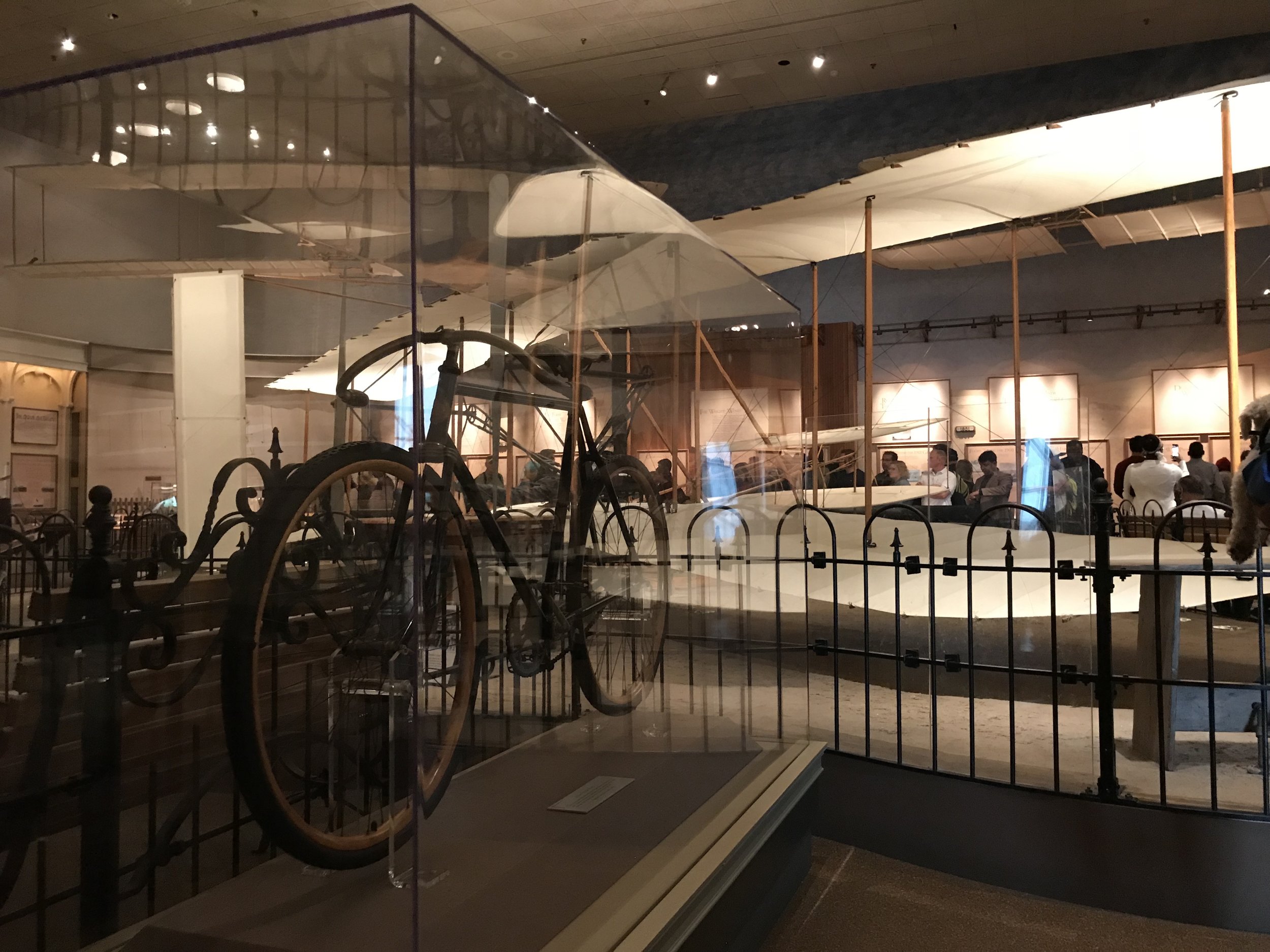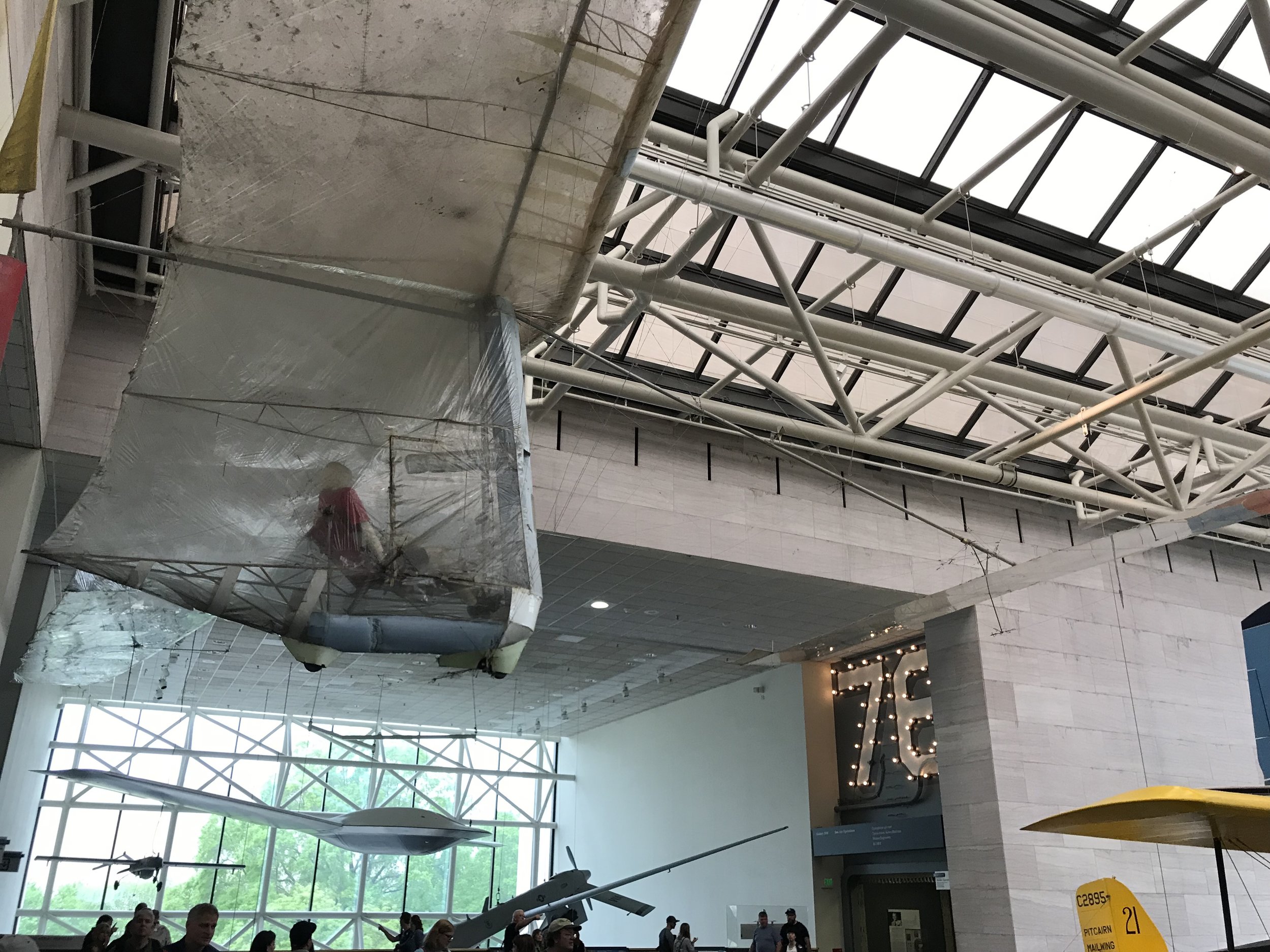The post about Skylab's probable clipless pedals was fun to write. But the sweet 70's leisure suit vibe of the Skylab ergometer couldn’t touch the wood-wheeled elegance of this bike, one of five (5!) surviving bikes built in Dayton by the Wright brothers. Tim Moore, the author of Gironimo!, who completed one of history‘s hardest Giro d’Italia courses on a wood-rimmed bike from the teens, would kill for this bad boy:
Its price in 1898 was $42.50. The inflation calculator from the Bureau of Labor Statistics indicates that this works out to a little over $1000 in 2018 money:
Since the calculator only goes back to 1913, I assume we can tack on a few bucks, although I think inflation was pretty low at that point in time. And knowing that this bike, the St. Clair, was Wright Cycles' mid-range model below the Van Cleave, it’s at least in the price ballpark of modern day bikes.
Here's the St. Clair with the original Wright Flyer in the background:
That’s the actual bike next to the actual airplane that flew at Kitty Hawk in December 1903. The Wright Flyer is five years newer than the St. Clair. That's what I call A-U-T-H-E-N-T-I-C-I-T-Y. It will not surprise you to know that I was more excited about the bicycle. And not because the Wright Flyer has been re-skinned twice since it flew.
Lucky for me, just around the corner was the Gossamer Condor to merge my interests:
To explain the significance of this Saran-wrapped beauty, you have to step back a few years. In 1959, the Kremer Prize was established by London’s Aeronautical Society. The rules were simple: a human-powered plane had take off by itself (no catapults allowed) and climb to an altitude of ten feet to clear a marker. Then the plane had to make a 180° left turn, travel to another marker a half-mile away, and make a 180° right turn before clearing the same ten-foot marker prior to landing:
https://hackaday.com/2015/01/27/retrotechtacular-the-gossamer-condor/
This was a beast of a challenge, and not just because it pre-dated the metric system. Even the strongest cyclists (who, I'm guessing, aren't the best pilots in most cases) can only sustain about half a horsepower for any meaningful amount of time on a good day. Which means that any human-powered aircraft has to be really, really light. It also introduces a chicken-and-egg paradox: is it easier to teach a cyclist to fly, or is it easier to train a pilot to generate the necessary wattage to keep the fragile plane aloft? Gossamer Condor builder Paul MacCready tried it both ways. First, his son Tyler flew the Condor because of his small size and his experience flying hang gliders. Then, racing against what they thought was a Japanese team with a balsa-and-paper plane, MacCready hired professional cyclist (and onetime US National Team member and 1989 contestant in the Human-Powered Vehicle Race across America) Greg Miller as pilot. Greg proceeded to set the world record for man-powered flight in the Condor, but he reportedly couldn't negotiate the Kremer course and crashed in a later test flight (see the video below). When Greg had to go to Europe to race, MacCready found Bryan Allen, an avid amateur cyclist and hang-glider (and now scientist at Jet Propulsion Lab), to do the penultimate Kremer test:
The Flight of the Gossamer Condor, of which this clip is an excerpt, won an Academy Award for Documentary Short Subject in 1978.
Let's geek out over the similarities and differences in the Wright Flyer and the Gossamer Condor:






